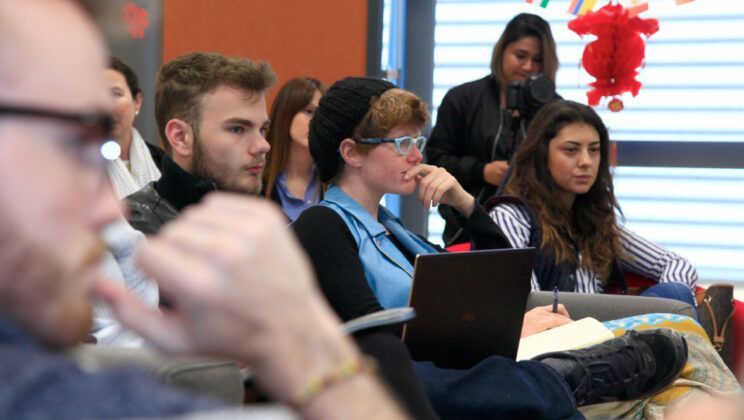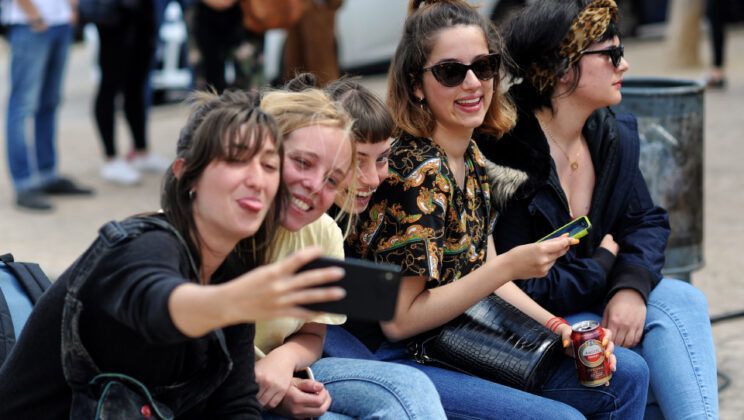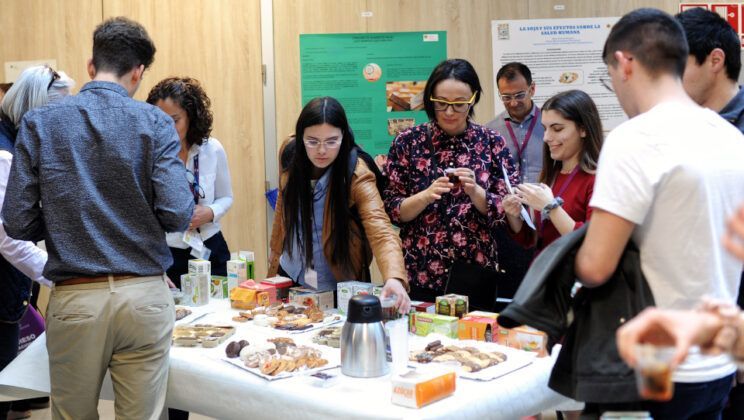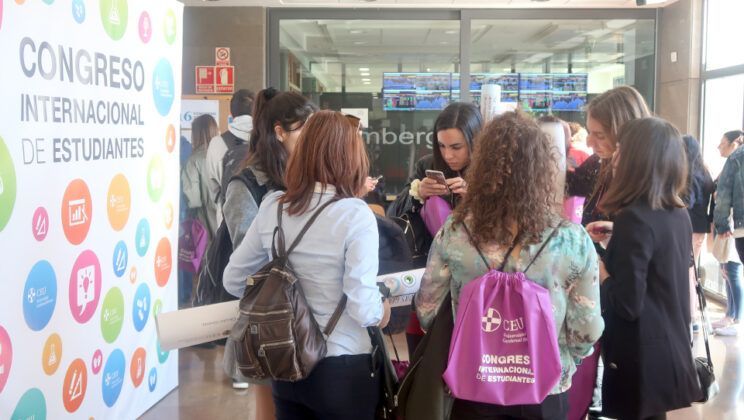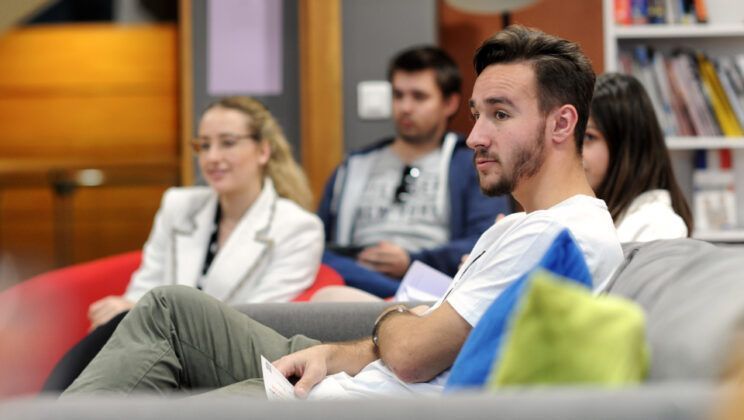“I want to make a difference through design”. This was one of the first things that we heard at the start of first year Industrial Design student Marina Redondo’s presentation. In 10 minutes of scientific language she set forth the project that she presented at this years International Students Congress and that she has to defend in front of a jury. “Design a prosthesis to give someone a future” is the title that she has chosen for her submission.
In our country more than sixty thousand people live a completely different reality: they may either be lacking a limb or those that they do have, have limited function. The causes of this functional diversity can be due to medical reasons (illnesses such as diabetes), congenital situations or injuries.
Prosthesis or superpower?
Through her work and thanks to 3D printing technology, Marina is looking to give movement back to the children who are living in this situation. The technology allows her to produce her model prosthesis quickly and inexpensively, taking just nine hours and costing three hundred Euros.
In a society overwhelmed by materialism and where productivity and innovation are at the order of the day, Marina gives us a lecture on professionalism and social commitment: she is a shining student who although is only in her first year and is looking for ideas to improve peoples lives, favouring social inclusion.

Marina, how did you come up with the idea of this project that you have ended up presenting at the International Students Congress (CIE)?
Since I was at school I have been interested in 3D printing and technology. In fact in class I managed to assemble a printer like the ones we have in the School, the Anet A8. When I arrived here and saw that we had three of them and a large scanner, I started to think about how I could take advantage of these resources.
As a first year Student I didn’t know what the CIE was until I received a message which lead me to researching and presenting my own project. I immediately turned to my tutor, Manuel Martínez, and he gave me the idea: a project for people. Which is what I am presenting today.
Something that I always say as well as it being the motto that I always think about is, as engineers, we are people’s problem solvers who can directly influence social change.
“Research requires time, but it is necessary if you want your work to have a human and scientific significance”
The concept is as follows: when a person is older and they suffer from the amputation of a limb, they can accept their new reality through professional support. However, with regards to children, the psychological side is much more important. Basically because at that age your personality is still developing which means there is a higher chance of discrimination. Because of that, with my project I want to try and normalise this reality and change these children into mini superheroes… with a completely adaptable design!
The theme of your project is functional diversity, is this something that is very close to you, or is it a social commitment that came to you in a completely natural way?
In my family there isn’t anyone who for this is a reality. I simply wanted my work to be something that could improve people’s lives. If I can use what I know, my area of studies, to make people happy… why not do it? We design for people: They are designs made for people by people. Something that they teach us in the Degree and is always very prominent is that the person has to be the centre of the design.
It was a while ago but I did have the opportunity to meet someone that has suffered from the amputation of a limb and I discovered in what ways society looks differently at these people. It seems that when they are walking, people’s gaze is more fixated on the prostheses rather than on the person’s eyes.

We have to normalise this situation. There are more than sixty thousand people with a prosthesis in our country; we are only just behind the United Kingdom. It all depends on us overcoming traumas and reaching complete normalisation.
Blueprints and 3D printing for mini superheroes
With your project you aren’t only normalising prostheses but you’re also converting them into arms of superheroes. You say you think a lot about young kids from six to eight years old and that’s surprising. Are you going to continue with the project, would you like to be able to produce them one day?
I still have a long way to go, I am only in first year. But yes, I would like to spend more time on it as well as dedicating my final degree project to this theme. I do however have a lot more to explore and there are lots of themes that interest me: graphic design, packaging or product design. This project doesn’t stop at being the design of a product.
For example, if you take into consideration the hole on the underneath of it that has a proximity sensor. This works so that when you get close to something, the prosthesis vibrates or gives a warning so that the user knows to grip the object.
“Our works are designs made by people for people”
My prosthesis is going to be mechanic; that is to say that putting it in a harness and the body’s own movement moving it. In the future I would like to develop a prototype and work on more movement so that it can be automatic. At the moment it is only a model, an idea; now I need to get a deeper understanding so that I can develop it in a much more rigorous and complete way.
Having an idea is an important step. You said that designers are constantly looking for solutions in order to improve the lives of people. This could probably apply to other professions: designers, educators, and journalists… How do you think that, amongst us we can become a more inclusive society?
Without a doubt we can all bring something to our profession. However I believe, as engineers, we are those who can bring the most as we create objects. We create something for someone, responding to an already existing need. A product shouldn’t exist just because; instead it should be tailored to a concrete problem. This concept is the base, for example, of ergonomics.
Encouraging research in the classrooms
What do you think about the organisation of these activities, where they invite people at the beginning of a research project?
I think that it is a good university initiative and every discipline can bring something different to the congress. The university and its students have engaged, they have come in from the streets, they have talked to the people and said: “we are the future and we want to improve the future”. Yesterday, for example, I went to one of the activities about inclusive sport and talked to some of the people taking part. I was interested by the frames and equipment that they were using, I looked closely at their prostheses…I would really like to research and learn more about this theme, and what would be even better…if I could, collaborate with them and their association in some way!
To my classmates in Architecture and Industrial Design and just other students in general, I would say be motivated, you have to be if you want to be here presenting innovative projects.
It’s true that you have to invest a lot of time in the projects and work intensely on them. I started to learn about the medical side of things because; you evidently need to know how many bones there are in the hand and how they create movement in order to develop the joints. The research phase is basic: the prosthesis has to match the biological aspects so that it is useful. Research takes time but it is necessary if you want your work to have human and scientific significance.
What will you take away from this experience, what have you learnt at the CIE?
To start with, it has helped me overcome my fear of public speaking.
“My idea is to utilise 3D technology and customise the design of the exterior of the prosthesis, keeping in mind the target audience of 6-8 year”
Apart from the fact that, it introduces you to the world of research in an intense way as you have the responsibility of presenting a project, it has been very interesting. It opens your eyes and makes you want to learn more and more. For example in my case, I have had to combine child psychology with social inclusion and the construction of a new image. All of this I had to show on the external side of the design of the prototype… you have to bring together lots of areas of knowledge.
Do you want to participate in next year’s edition of the conference with a new project?
Absolutely! As the rector commented at the start of the CIE, it is currently in it’s 16th year and each time there are more students getting involved and presenting projects. The only thing that I am not sure about is what I will present on: perhaps I will develop this project even more or I may opt for the route of design and chemistry, which is also one of my passions. The one thing I am sure of is, if my studies allow it, I will with out a doubt participate!












